This was published 7 years ago
The Victoria Settlement, Northern Territory: Australia's lost city in the Top End
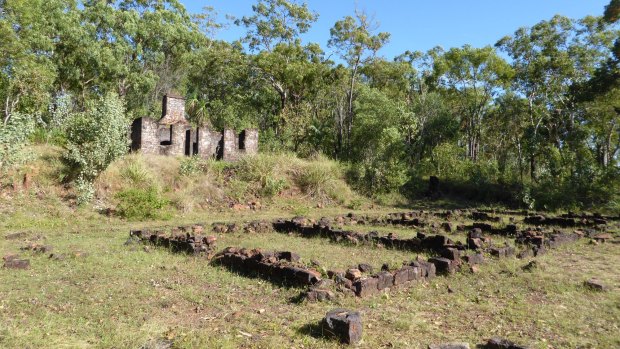
Hospital ruins at Victoria Settlement, Northern Territory.Credit: David Whitley
The ruins line up, almost designed to please the eye. Built out of chunky stone with tall chimney-esque tops, they look like they could be miniature temples; remnant traces of a long-lost civilisation.
The truth turns out to be a bit more mundane. They're old British-built houses, and they really are chimneys. It's just that they've been built in the most inconceivably inappropriate place.
The Cobourg Peninsula, even by Australian outback standards, is remote. From Darwin, it's a seven-hour drive that involves crossing several rivers and creeks, heading down dirt tracks that do a passable impression of an extremist obstacle course, and crossing the permit-only Arnhem Land. Aside from national park rangers, only a handful of Indigenous people live on the peninsula. It is more or less in pristine condition – a wetland sanctuary for migratory birds, and a clean marine bonanza for all manner of apex predators. If you're daft enough to go for a swim here, expect a big croc or a bull shark to be in there with you.
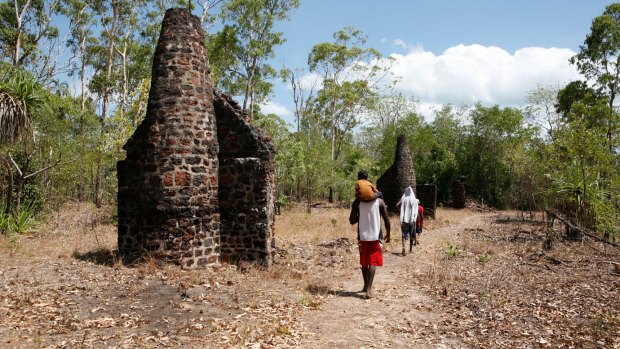
Aborigines in Victoria Settlement.Credit: Ilse Schrama / Alamy
In short, this is one of the very worst places imaginable to build a settlement. But that's what the British Navy did in 1838, when laying a marker down on Australia's northern coast was deemed far more important than actually surviving where that marker was plonked.
See also: Climbing Australia's scariest tourist attraction
And so the Victoria Settlement was born, on the shores of Port Essington. The Cornish stonemasons in charge of constructing it stuck to what they knew, which meant surprisingly stout, sturdy houses that were laughably ill-equipped for the hostile, alien climate. The last thing you need in one of the sweatiest parts of the Top End is an indoor fireplace to cook over and thick, windowless walls.
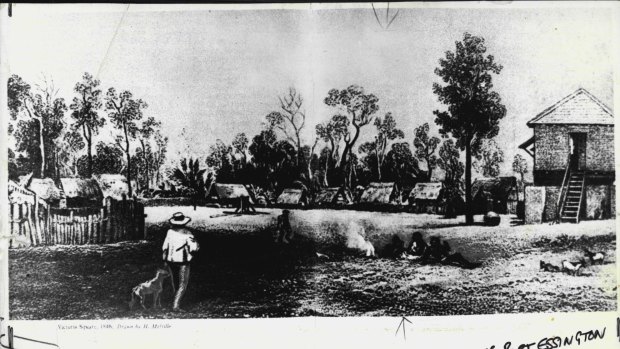
Victoria Settlement, Port Essington.Credit: Fairfax Media
Dave McMahon, head guide of Venture North, which runs five-day tours to the Cobourg Peninsula, says: "They never adapted. The only thing they had going for them was persistence."
This applied over and over again. The settlers attempted to plant British crops, which, unsurprisingly, failed. They suffered from scurvy, even though there was an abundance of vitamin C in native fruits.
The hospital would have been even more grim. It was designed to have no airflow, as the settlers thought malaria was caused by bad air. It would have been hot, humid and stale in there.
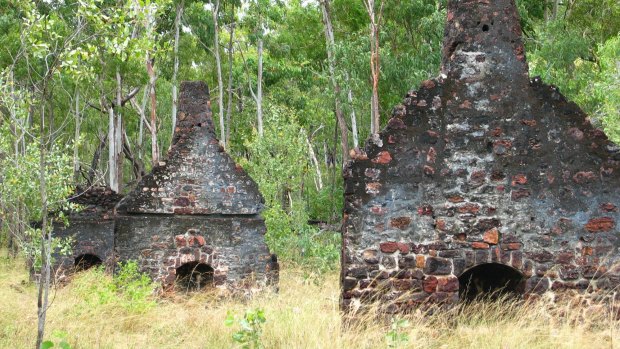
The remains of the married quarters at Victoria Settlement.
Only the foundations of it remain, plus the ruins of the hospital kitchen behind it, but it would have got plenty of use in the settlement's disastrous 11 years.
McMahon says: "There were times when every single person bar one was in the hospital. They would have to wake a malaria-stricken surgeon and ask how to cut off someone's arm."
See also: Australia home to world's longest roller coaster zip line
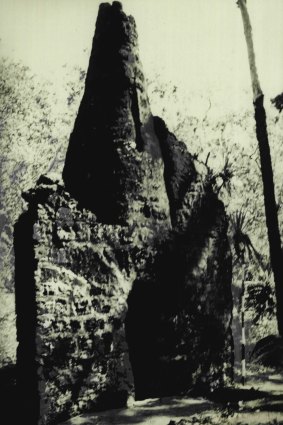
A wall and chimney remain of one of the married quarter buildings. Credit: Fairfax Media
Because the British Navy was fastidious in keeping its records, we know that life in the settlement was pretty much unrelenting misery. After a year, a cyclone knocked everything down, killing 10 people. Supply ships were weeks or months late. And punishments were harsh – the blacksmith who got extra food by trading arrow tips with the Indigenous people was lashed to within an inch of his life.
"Every kid brought here died," McMahon says. "Every kid born here died. And a lot of women died in childbirth."
Glass fragments piled up inside the ruins give a strong indication of how the settlers dealt with their fate. They drank. And drank. And drank. Champagne bottles came from French ships on scientific expeditions. Gin bottles came from the Dutch, albeit via an unexpected intermediary.
The Macassans – from modern-day Sulawesi – proved to be a surprise lifeline. They came, as they had done for at least a century before the British arrived, to harvest sea cucumbers. But they weren't averse to trading everything else too. They left their mark in the form of a tamarind tree at the entrance to the settlement, plus the wild cattle and pigs that roam the Cobourg's forest tracks today.
Many of the Victoria Settlement's buildings have withstood cyclones surprisingly well, although they now play home to snakes, cane toads and goannas.
And, in what is perhaps the cruellest irony, the area that have survived the best is the graveyard. Here, an obelisk stands in honour of Emma Lambrick, the woman who became the settlement's midwife and matriarch. She is one of the 58 people who succumbed to the hell of this ill-advised colonial folly, and is named on the plaque opposite.
Two of the last three to die were the surgeon and assistant surgeon. You tend to take that sort of thing as a sign – the settlement was abandoned soon after.
What remains has a small scale Tikal or Machu Picchu feel. At the top of the Top End, a forgotten history has been left behind.
TRIP NOTES
MORE
FLY
Virgin Australia and Qantas fly to Darwin from Sydney and Melbourne. See qantas.com.au, virginaustralia.com
TOUR
Venture North's five-day trip through Kakadu, Arnhemland and the Cobourg Peninsula from Darwin costs from $A3290 twin share. All meals and accommodation – which is not en suite – are included. See venturenorth.com.au
David Whitley was a guest of Tourism NT and Tourism Australia.
See also: The 26 most wonderful places to visit in Australia
See also: 13 Aussie hot spots that rival international icons
Sign up for the Traveller Deals newsletter
Get exclusive travel deals delivered straight to your inbox. Sign up now.